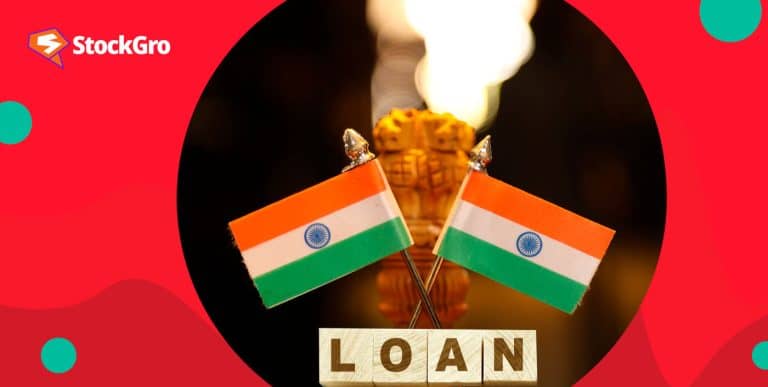
There is no predetermined moment when unanticipated costs or financial crises may occur. While you may have already taken out a personal loan, applying for a second one might cross your mind.
To protect your future financial planning, you must, however, be aware of the potential roadblocks and take into account other options before moving further. We will go into the details in today’s article.
What is a personal loan?
An unsecured loan provided to people for a variety of uses by financial institutions is known as a personal loan. A personal loan does not require collateral or security and is offered based on income, employment history, credit score, and repayment capacity.
Anyone with a valid financial necessity, like paying off debt, paying for school or a trip, or any other personal need, can use the loan amount.
The loan is repaid through fixed monthly instalments over an agreed-upon tenure, usually ranging from a few months to a few years. Lenders use borrower creditworthiness and other criteria to set repayment periods and interest rates.
While personal loans can be a helpful financial tool, and some lenders even offer personal loans in 10 seconds, it is essential to borrow responsibly and within one’s repayment capacity. If not, you might face some restrictions, unlike your first personal loan.
Also read: Exploring personal loans in India: A journey through your financial options
Should I get a second personal loan?
While it is possible to get multiple personal loans, you should carefully consider your reasons and ability to repay them before applying for a second personal loan. Lenders will assess your eligibility for another loan just as rigorously as they did for the first one.
Before deciding to provide a personal loan, lenders look at several things, such as your present income, any outstanding debts, and so on. Lenders will carefully consider your repayment capacity for existing loans before approving further personal loans.
The lender may reject your loan application if they suspect that you won’t be able to repay both loans. Here are some aspects they verify:
Employment and income stability: Lenders want to see a steady source of income and an employment history that shows your capacity to make consistent loan payments.
Credit score: Lenders see a high credit score as an indication of a borrower’s reliability and responsibility when it comes to repaying debt.
Debt-to-income ratio: Monthly debt-to-income ratios show how much of your income goes towards paying off debt. A high debt-to-income ratio, usually higher than 40%, makes it harder to qualify for additional loans.
Payment history: Lenders look at your payment history extensively when deciding whether or not to extend credit.
Remember that it may be challenging to get approved for a second personal loan if you are already carrying significant debt, have recently taken out your first loan, or have a negative credit report.
Second personal loan vs second mortgage
Second personal loans in India are doable with the right combination of income stability, solid credit, and a reasonable debt-to-income ratio, according to most lenders.
On the other hand, the very definition of a second mortgage is a debt secured by a property that has previously been mortgaged. You can get more money for your home loan by mortgaging your property to another bank, other banks, or non-bank financial companies (NBFCs).
Both financial instruments require careful consideration of the borrower’s repayment capacity to avoid financial strain.
Also read: Personal loan EMI tax benefit: How do you reduce your tax liability?
Challenges of applying for a second personal loan
Let’s delve deeper into the challenges of taking out a second personal loan:
- Lender-approval and debt capacity:
When applying for a second personal loan, lenders thoroughly evaluate your financial situation. Several things are taken into account, including your earnings, current debt, and credit score. Lenders assess whether you can handle the additional debt alongside your existing obligations.
If they perceive that managing two loans would strain your finances, they may deny your application.
- Credit score impact:
Applying for a second loan triggers a credit inquiry. While a single inquiry has a minor impact, multiple inquiries within a short period of time can lower your credit score. The percentage of your available credit that you are actually utilising, known as your credit utilisation ratio (CUR), will rise. Poor credit could be a result of a high CUR.
On top of that, if the second loan significantly increases your DTI ratio, it may also affect your creditworthiness. Keeping a satisfactory credit score is vital for future borrowing. A high DTI (typically above 40%) can hinder approval.
- Interest rates and costs:
If your credit is negatively impacted by the new loan, you may be qualified for a higher interest rate on the second loan. As a result, borrowing will cost more overall.
- Financial stress and possible debt trap:
Keeping track of several loan instalments might put pressure on your monthly budget. Before taking a second loan, make sure you can comfortably handle the additional financial responsibility and support the increased EMI.
Additionally, failing to effectively manage multiple loans can lead to a debt spiral, where the burden of high interest rates, penalties, and late fees can become overwhelming. Lenders are likely to view you as a high-risk borrower due to your increased debt load, which could limit your access to financial opportunities.
Alternatives of a second personal loan
If you’re considering another financing to cover your costs, here are some alternative options to a second personal loan:
- Top-up loan:
With a good history with your current lender, you may be able to secure a top-up loan. A top-up loan does what its name says: it lets you raise the credit limit on your current personal loan. You can apply for a second loan without having to approach another lender if you take out a top-up loan.
Additionally, some lenders let you regard the top-up loan and your prior loan as separate loans or combine them. This option increases the limit on your existing loan and could offer a lower interest rate than starting a new loan agreement.
- Debt consolidation loan:
The interest rate on this type of loan might be reduced since it consolidates many debts into one. The fact that the loan may be repaid at a lower interest rate can help you improve your money management. Instead of paying several payments to different creditors, you, the borrower, must make just one payment.
Also read: Beyond interest rates: The hidden costs of personal loans revealed
Conclusion
The road to financial management is seldom smooth, and you may have to look into other options if you face unexpected difficulties. Because at the end of the day, being financially stable comes down to being prepared, borrowing responsibly, and being open to exploring other options that could work better for your specific situation.

